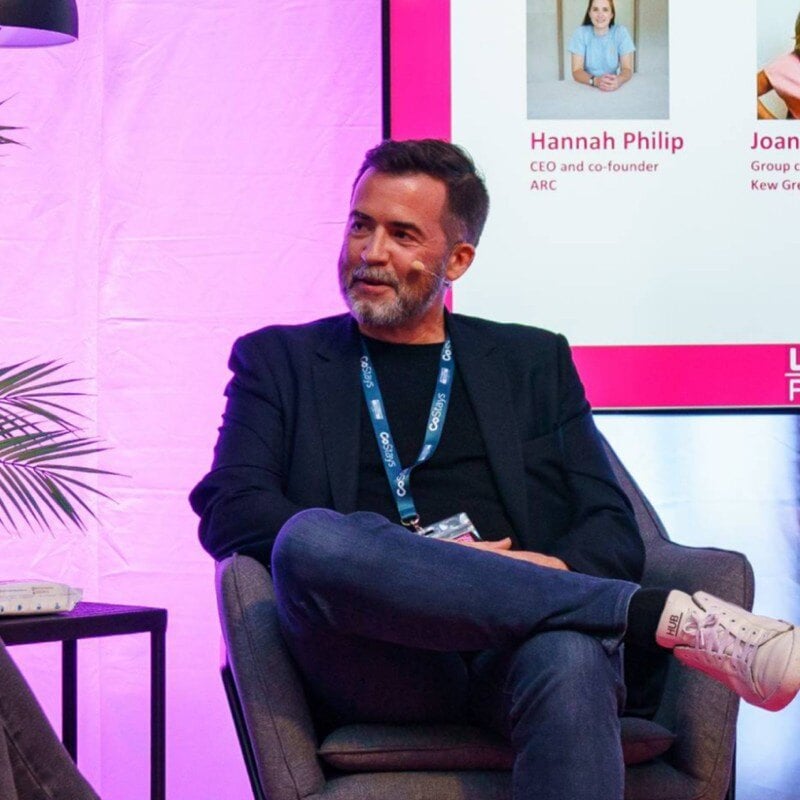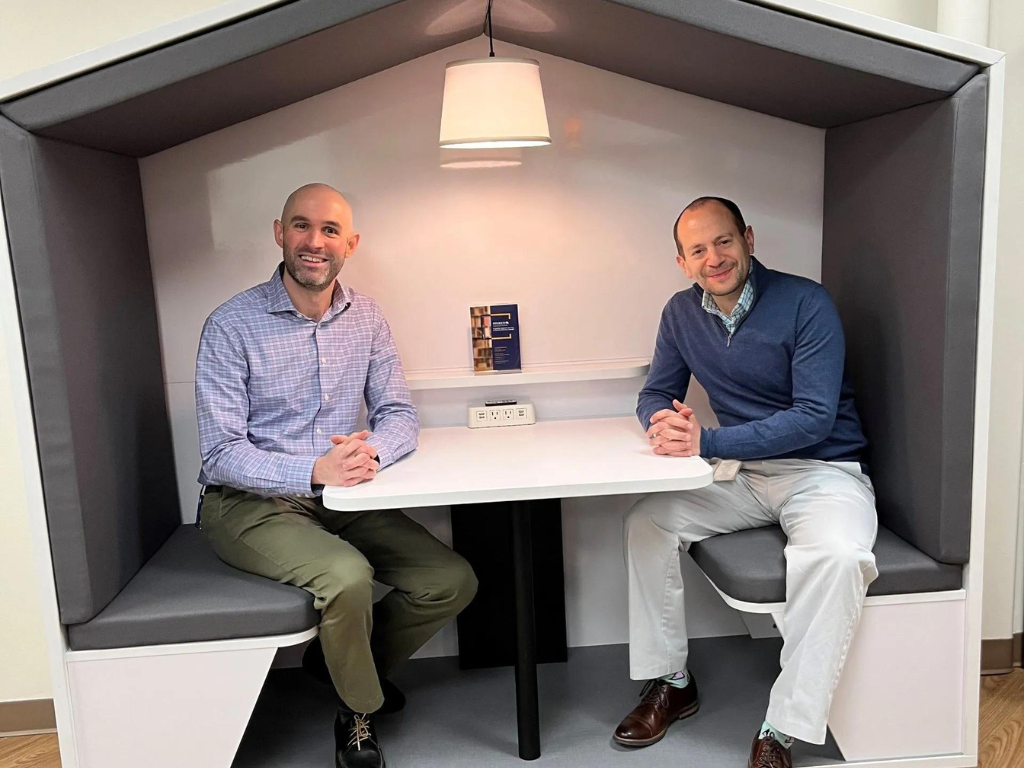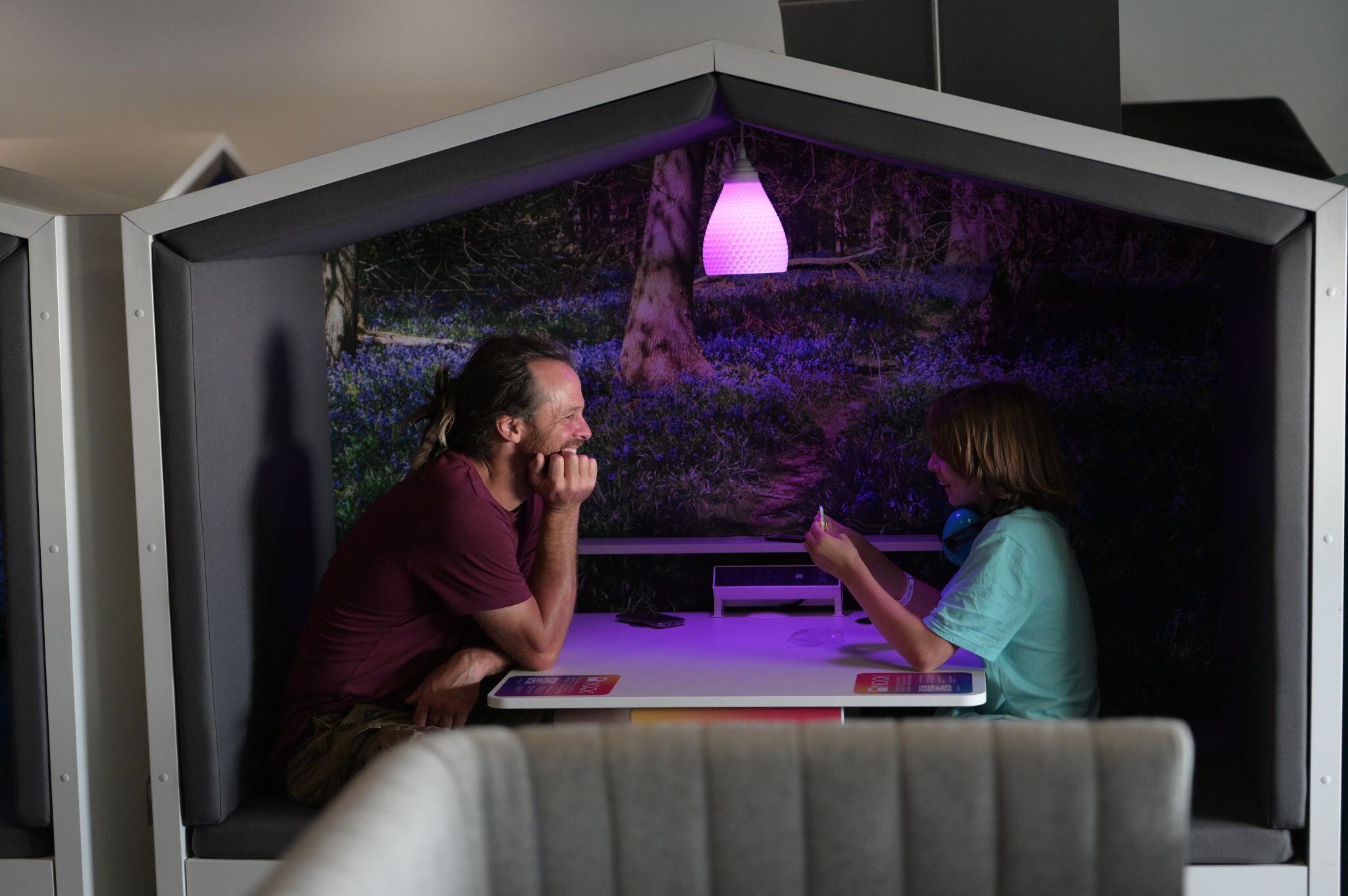Client: University of Oregon, Department of Architecture
Challenge: Providing students with quiet, functional spaces for group work and study outside their design studio.
The Discovery
Last fall, Alison Kwok, a professor in the Department of Architecture at the University of Oregon and founder of the NetZED Lab, attended an educational conference in Portland with several graduate students. Unexpectedly, they discovered Nook pods, a solution that caught their interest for its potential in educational settings. Initially unsure if Nook would suit their academic environment, Kwok and her students quickly saw the possibilities for enhancing small group activities and quiet study areas. On a whim, Kwok decided to bring a Nook pod back to campus, marking the beginning of their Nook story.
Integration and Use
Once installed, the Nook pod seamlessly integrated into the department's daily life. Students quickly adopted it as a favored spot, finding it perfect for both group work and individual study. The pod's design allowed them to work in a sheltered, quiet environment while still feeling connected to the larger social setting of the architecture building. This blend of privacy and openness was particularly appreciated, as students could be close to their friends without the distractions of the usual hustle and bustle.
Encouraging Interaction and Feedback
To further engage the students, Kwok placed a notebook—dubbed the "Nook Book"—inside the pod. This notebook encouraged students to share their experiences and thoughts on how the Nook was meeting their needs. It became a tool for critical thinking, allowing students to reflect on design and usability from a user's perspective. The feedback was overwhelmingly positive, with students expressing gratitude for the new space and suggesting ideas for improvements, such as adding a whiteboard or more lighting options.
Creative Adaptations
Students creatively adapted the Nook to suit their needs. They extended the pod's seating capacity by adding a table at the end, allowing more people to gather. One student even brought in a color-changing lamp, enhancing the pod's atmosphere based on the group's mood. These modifications showed the versatility and user-centric design of the Nook, making it more than just a functional space—it became a part of the students' daily routines and a focal point for collaboration.
Impact and Reception
The students' reactions highlighted the Nook's success. They described the pod as a "RETREAT," a place to "HUDDLE," and a spot for "RENEWK"—a playful fusion of "renew" and "Nook." The pod became a destination for tackling challenging group projects, quiet study sessions, and casual gatherings. Comments from students included appreciation for the pod's construction, color palette, and seating design. They loved how the seating allowed for personal space while still fostering a sense of community.
Conclusion
The Nook pod addressed a significant need within the University of Oregon's architecture department: providing versatile, quiet workspaces outside of the design studio. The positive feedback from students and their creative use of the space underscored the Nook's effectiveness. It wasn't just a new piece of furniture; it became a preferred destination, enhancing focus and collaboration while offering a sense of shelter and comfort.
The Nook's design effectively contains conversations and minimizes distractions, making it an ideal addition to educational settings. The architecture department's experience suggests that more Nook pods would be a valuable investment, providing further opportunities for students to work and study in a comfortable, collaborative environment. This case study demonstrates the holistic benefits of Nook pods, showing how thoughtful design can significantly enhance academic and creative spaces.
.png)



.png)
